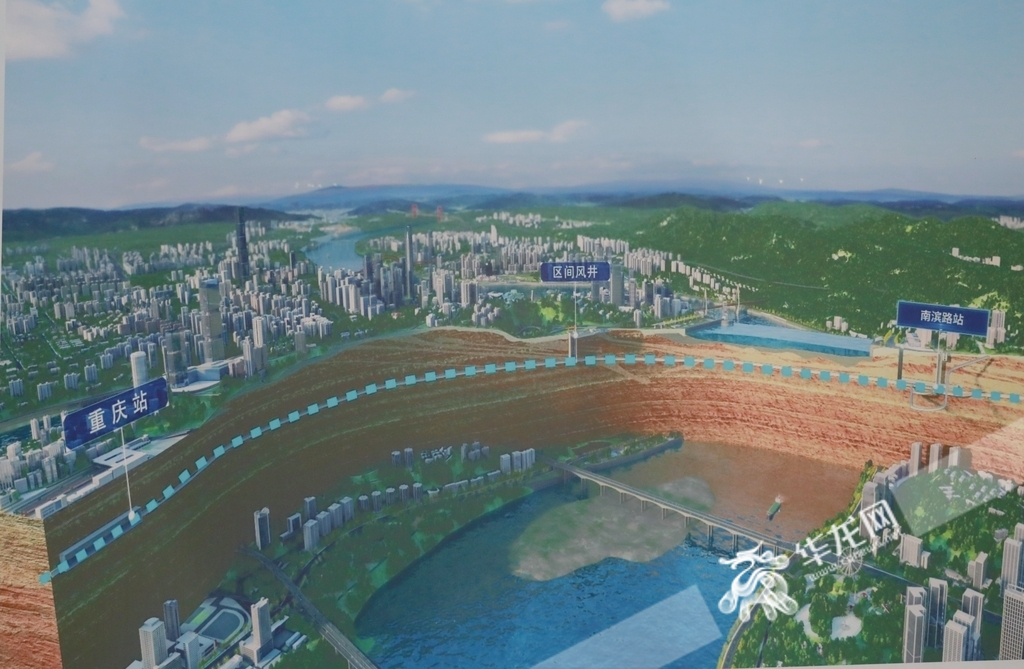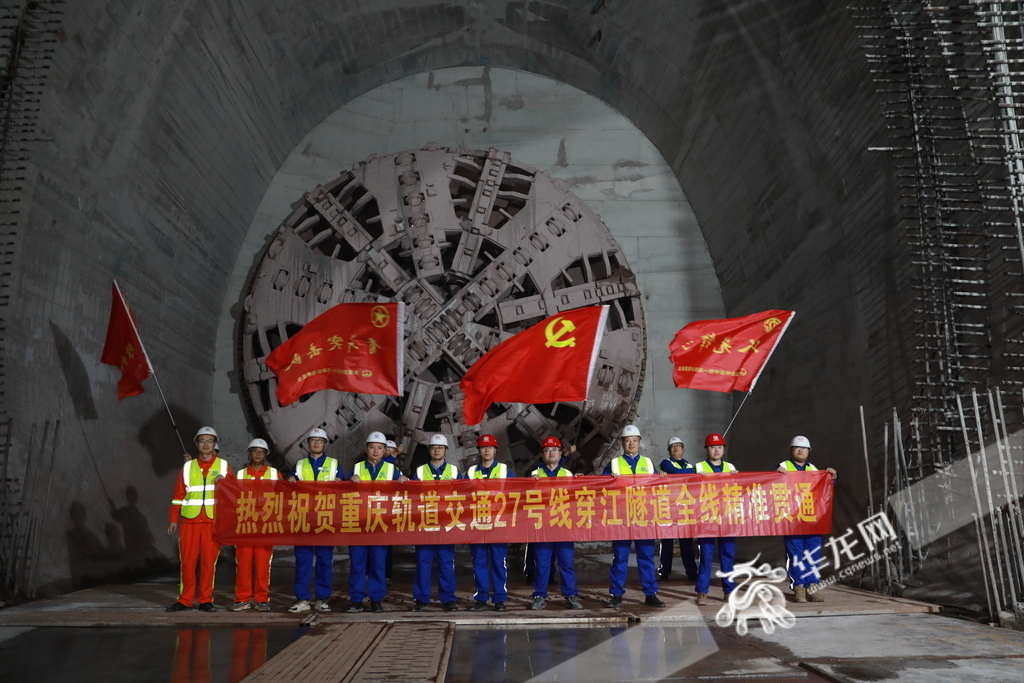The first tunnel crossing the Yangtze River in Chongqing’s upper reaches completed!
2024-11-26 14:17:13
CHONGQING (CQNEWS) -- The entire stretch of the tunnel crossing the Yangtze River on Chongqing Rail Transit Line 27 was completed on November 25, making it the first-ever rail tunnel to cross the Yangtze River in the upper reaches of the river and the first such tunnel on the rail transit network of Chongqing.
This river-crossing tunnel represents a crucial control point for Line 27, according to Chongqing Railway (Group) Co., Ltd. (a subsidiary of Chongqing City Transportation Development & Investment Group). The completion of this project overcomes numerous technical challenges and fills a significant gap in tunnel construction technology in the upper Yangtze River basin.

83 meters!
The deepest shield tunneling starting shaft for urban rail transit in China
The tunnel on Line 27, located between Chongqing Station and Nanbinlu Station, spans 3,212 meters, with the river-crossing section measuring approximately 1,269 meters. It connects the bustling districts of Yuzhong and Nan'an, areas characterized by towering skyscrapers, significant elevation differences between the riverbanks, and narrow river beaches. This makes the tunnel construction particularly challenging compared to conventional tunneling, as the tunnel has to pass under the riverbed.
According to a project official from the No.8 bid section of Line 27, managed by China Railway First Group, the tunnel’s construction required addressing a complex technical issue: the balance between the thick protective rock layer beneath the riverbed and the shallow depth required for the station construction. The tunnel crosses a deep riverbed section with a minimal protective rock thickness of just 8 meters. As a result, the shield tunneling machine’s launch shaft reached a depth of 83 meters, equivalent to the height of a 27-story building, making it the deepest shield tunneling shaft in the rail transit history of China.
To successfully launch the shield machine in the deep and narrow vertical shaft, the project team applied innovative solutions. New anti-twist steel cables were used during the shield machine’s installation, and multiple visual equipment units were added along the shaft. These provided real-time 360° panoramic feedback to the operator, ensuring the safe and precise installation of the machine.

Digital empowerment
The giant "steel pangolin" smoothly crossing the Yangtze River
Once the shield machine began its journey beneath the river, the focus shifted to addressing water pressure and impermeability. The tunnel passes through the riverbed, where the maximum water pressure reaches 0.7 MPa.
To tackle these challenges, the project team designed and deployed the "Yujiang" – an intelligent dual-mode shield machine. This giant “steel pangolin”, with an excavation diameter of 8.83 meters and a total length of 135 meters, weighs 1,350 tons, making it one of the largest shield machines in use in domestic rail transit projects.
What makes this “steel pangolin” special is its dual-mode capability, which allows it to easily switch between slurry shield and earth pressure balance modes. While tunneling through a fractured zone at the riverbed, the machine encountered large rocks with diameters of about 60cm, which blocked the slurry pipeline. The shield machine quickly switched to earth pressure balance mode, crushing the rocks and continuing its excavation, thus ensuring smooth progress. This marks the first time a dual-mode intelligent shield machine has been used to construct a rail transit underwater tunnel in the upper Yangtze River.
Additionally, the project adopted an innovative portable ahead-of-face geological forecasting system. This system detects vibrations caused by the shield machine’s cutter head as it breaks rock, providing real-time information about the geology ahead, allowing the team to adjust the tunneling speed and correct the shield’s alignment. An intelligent chamber pressure warning system also helps maintain the balance between the slurry pressure and the water pressure at the riverbed.
Thanks to these cutting-edge technologies, the shield machine crossed the Yangtze River smoothly, with zero ground settlement at the riverbanks and along the riverside roads.
To know more: Known as the "King of Transfers", Line 27 has 13 stations that offer transfer connections
Line 27, which spans 56 kilometers from Bishan Station in the west to Banan Huimin Station in the east, connects three major valleys in Chongqing's urban area. The line is designed for speeds of up to 140 kilometers per hour and will serve as a fast link connecting several key transportation hubs in the city, including three major railway stations (Chongqingdong, Chongqing, and Shapingba stations) and three commercial districts (Nanping, Daping, and Shapingba).
The line is equipped with 15 stations, 13 of which are transfer stations, facilitating quick and seamless connections between different modes of urban and suburban transportation and earning Line 27 the title of “King of Transfers" in the city’s rail transit system. Once operational, Line 27 is expected to significantly reduce congestion along Chongqing’s east-west routes, providing a more efficient and accessible rail network and further supporting the development of Chongqing's "rail transit metropolitan area". (Translated by Yuki, Fathom Language Limited)
Editor:江夷玮
 手机阅读分享话题
手机阅读分享话题